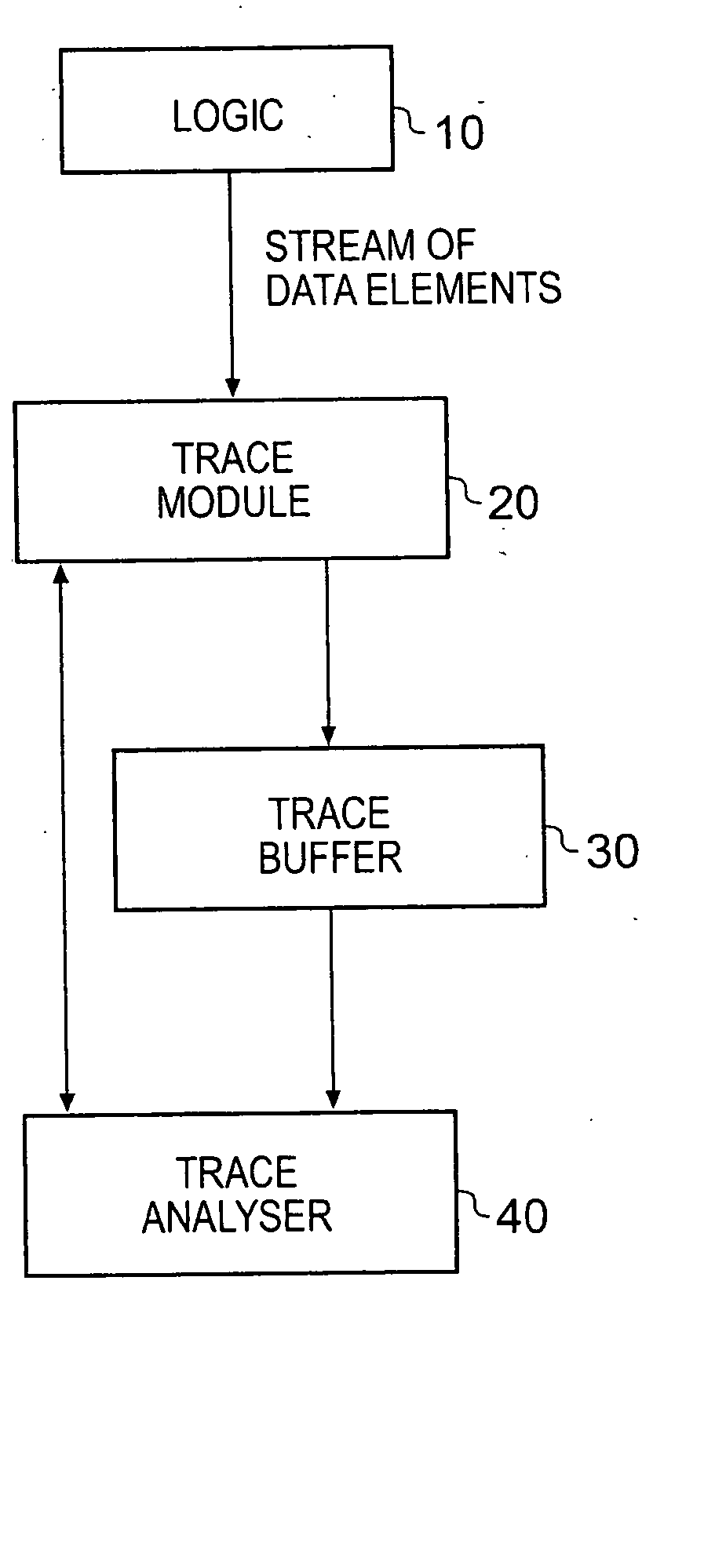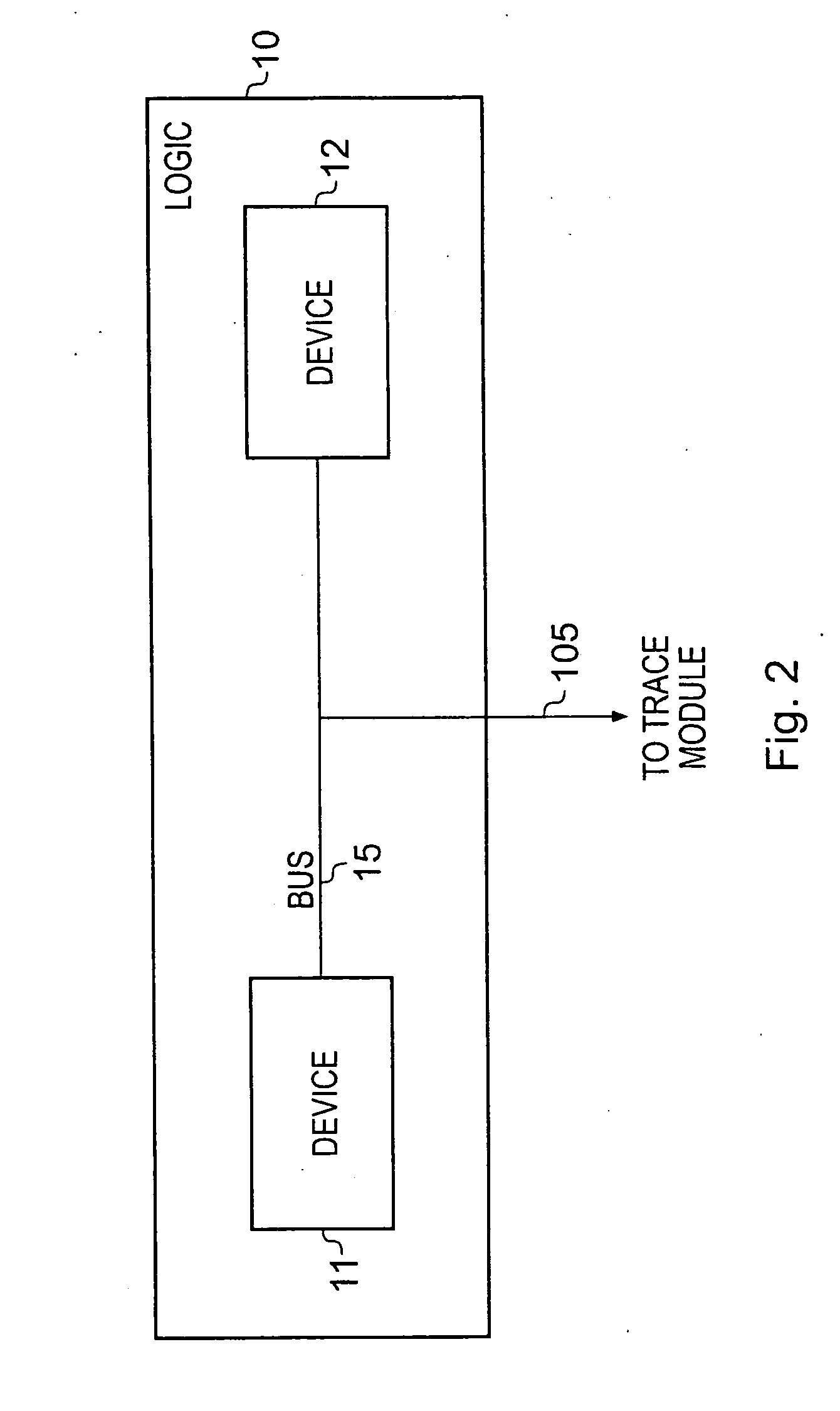Generation of trace elements within a data processing apparatus
a data processing apparatus and trace element technology, applied in the field of trace element generation, can solve the problems of limiting the rate at which information can be stored in the trace buffer, and increasing the power and complexity of the processor core, so as to save bandwidth and/or storage space, and the effect of saving storage costs
- Summary
- Abstract
- Description
- Claims
- Application Information
AI Technical Summary
Benefits of technology
Problems solved by technology
Method used
Image
Examples
Embodiment Construction
[0042]FIG. 1 schematically illustrates a data processing system providing logic 10, a trace module 20, a trace buffer 30 and a trace analyser 40. Whilst FIG. 1 illustrates a data processing system providing a trace buffer 30, in alternative embodiments the trace module 20 may pass its output straight to the trace analyser 40, without going via a trace buffer.
[0043] The logic 10 producing the stream of data elements received by the trace module 20 can take a variety of forms, and may for example be a processor core, a Direct Memory Access (DMA) engine, a data engine / accelerator, etc. Alternatively, the logic 10 may consist of a plurality of devices coupled by a bus, and the data elements may be monitored by the trace module 20 as they pass over the bus.
[0044] The trace analyser 40, which may in one embodiment be formed by a general purpose computer running appropriate software, is coupled to the trace module 20 and the trace buffer 30. The trace module 20, typically embodied on-chi...
PUM
 Login to View More
Login to View More Abstract
Description
Claims
Application Information
 Login to View More
Login to View More - R&D
- Intellectual Property
- Life Sciences
- Materials
- Tech Scout
- Unparalleled Data Quality
- Higher Quality Content
- 60% Fewer Hallucinations
Browse by: Latest US Patents, China's latest patents, Technical Efficacy Thesaurus, Application Domain, Technology Topic, Popular Technical Reports.
© 2025 PatSnap. All rights reserved.Legal|Privacy policy|Modern Slavery Act Transparency Statement|Sitemap|About US| Contact US: help@patsnap.com



